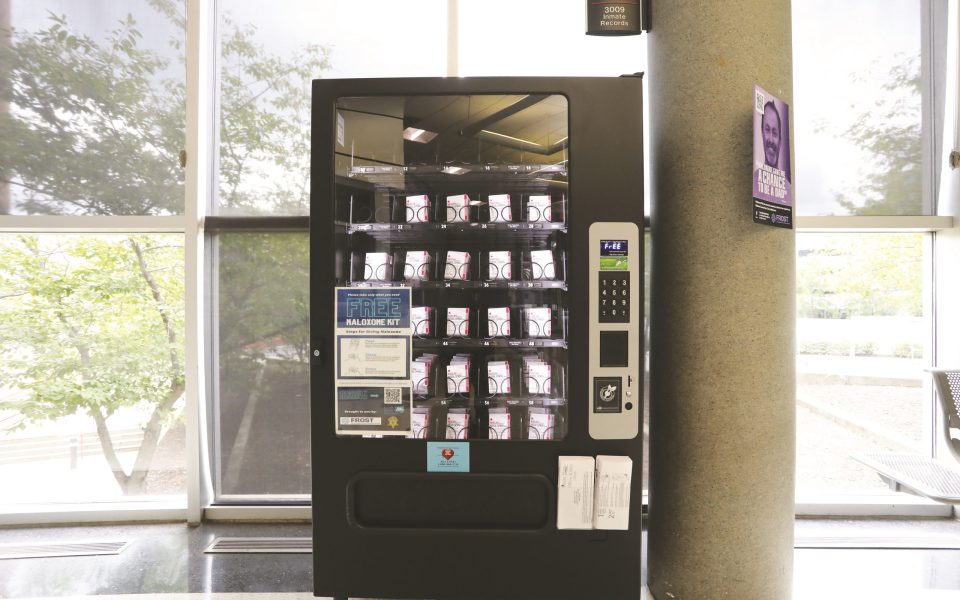This article was published by StatePoint Media Inc.
As America’s drug overdose and death epidemic continues to impact communities of every size in every corner of the country, new challenges have emerged.
In 2021, more than 107,000 people died from drug-related overdoses, according to the U.S. Centers of Disease Control and Prevention, the bulk of which were from illicitly manufactured fentanyl, which shows up in fake pills, methamphetamine and cocaine.
Since its founding in 2014, the American Medical Association (AMA) Substance Use and Pain Care Task Force has brought together medical societies and practicing physicians to develop and implement strategies that can help end this epidemic. The task force’s recommendations include urging physicians to enhance their education as well as advocate for comprehensive care for patients in pain and for those with a substance use disorder. The AMA also strongly urges states to update laws to make the opioid overdose reversal medication naloxone more readily available, decriminalize fentanyl test strips, and take other harm reduction initiatives to save lives from overdose.
When it comes to helping patients with a substance use disorder (SUD) so they can lead satisfying, productive lives, the science shows what works: medication prescribed by a physician or dispensed at Opioid Treatment Programs, combined with behavioral counseling and other services.
Despite certain positive trends and clear science, of the 40.3 million people nationwide with a substance use disorder, 93 percent receive no treatment, according to federal officials. A 2022 report from the U.S. Department of Labor found that health insurance companies regularly violate state and federal laws designed to provide coverage for substance use disorders and mental illness. Health insurance companies also continue to but up barriers to accessing medications for opioid use disorders (MOUD) and deny care to patients with pain—or make it so expensive that patients cannot access care.
“No community has been — or will be — spared the pain of this epidemic. The spiking mortality numbers—with young people and Black and Brown Americans dying at the fastest growing rates — add yet another urgent call to remove health inequities from the health care system. We know policymakers have not exhausted all remedies. Until we have, we must keep advocating for humane, evidence-based responses,” said Bobby Mukkamala, M.D., chair of the AMA Substance Use and Pain Care Task Force.
The AMA stresses that while physicians are leading in areas where they can have an influence, they cannot end the epidemic alone. To combat the issue at the state and national level, the organization has issued a national “roadmap” to policymakers and regulators focused on these specific actions:
- Remove barriers to evidence-based care for patients with an SUD. This includes removing prior authorization, step therapy and dosage caps for MOUDs, continuing federal flexibilities for take-home medication for opioid treatment programs, continuing audio-visual and audio-only telehealth options for patients to begin treatment, and removing regulations that prevent most physicians from being able to prescribe MOUDs to their patients.
- Take immediate steps to protect families by focusing on increasing access to evidence-based care rather than using punishment and the threat of family separation for persons with an SUD who are pregnant, peripartum, postpartum and parenting.
- Enforce laws that require mental health benefits to be on par with other health benefits, thereby broadening access to treatment related to mental health and substance use disorders.
- Pharmacy chains, health insurance companies and pharmacy benefit managers should remove arbitrary barriers to opioid therapy as well as ensure patient access to affordable, accessible non-opioid pain care.
- Patients and physicians should have conversations about safe storage and disposal of opioids and all medications; and increase access to naloxone to patients at risk of overdose.
- Develop and implement systems to collect timely, adequate and standardized data to identify at-risk populations, fully understand polysubstance drug use, and implement public health interventions that directly address removing structural and racial inequities.
To learn more about efforts to end the drug overdose and death epidemic, visit end-overdose-epidemic.org.
Join the First Amendment Society, a membership that goes directly to funding TCB‘s newsroom.
We believe that reporting can save the world.
The TCB First Amendment Society recognizes the vital role of a free, unfettered press with a bundling of local experiences designed to build community, and unique engagements with our newsroom that will help you understand, and shape, local journalism’s critical role in uplifting the people in our cities.
All revenue goes directly into the newsroom as reporters’ salaries and freelance commissions.


Leave a Reply